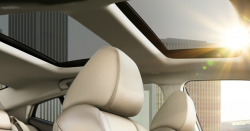
— Owners who say their Nissan sunroofs shattered for no reason have filed a proposed class-action lawsuit that alleges the panoramic glass is prone to shatter while the vehicles are parked or traveling highway speeds.
Customers pay premium prices for panoramic sunroofs, but the Nissan plaintiffs say their faith in the automaker has been shattered as easily as glass because of enduring the dangers and cost of exploded sunroofs.
The plaintiffs say it would have been cheaper and safer to have skipped the glass roofs and stayed with plain old metal roofs since Nissan failed to meet engineering challenges associated with installing large sheets of glass.
Nissan calls the glass roofs various names based on models of vehicles: Panoramic Moonroof, Power Panoramic Moonroof, Dual Power Panoramic Moonroof, Dual Panorama Moonroof and Dual Opening Glass Moonroof.
Whether calling it moonroofs or sunroofs, the plaintiffs claim the panoramic glass panels are dangerous in the following vehicles:
- 2008-present Nissan Rogue
- 2008-present Nissan Maxima
- 2008-present Nissan Sentra
- 2008-present Nissan Pathfinder
- 2008-present Nissan Altima
- 2009-present Nissan Murano
- 2011-present Nissan Juke
According to the lawsuit, Nissan knew or should have known about the shattering sunroofs since at least October 2008 due to owners complaining about the problem. In addition, the National Highway Traffic Safety Administration requested information from Nissan about exploding sunroofs in 2014 after other automakers had experienced similar problems.
Panoramic sunroofs are made of tempered or laminated glass that attaches to tracks set within frames attached to the vehicles. Some manufacturers use a laminated glass while Nissan, Kia, Hyundai and others use panoramic sunroofs made with tempered glass that features large areas of ceramic paint.
According to the lawsuit, tempered glass is a piece of annealed glass heated and then rapidly cooled. The tempering process creates an outer layer of compression shrink-wrapped around the middle of the glass that is constantly pressing outwards. The compressive layers create a stronger piece of glass as compared to non-tempered, but the glass can shatter if the compressive layer is compromised.
A problem with tempering, say the plaintiffs, is the use of thinner glass to decrease weight and save money on fuel, glass allegedly more likely to shatter because it is thinner.
But the real issue is ceramic paint that is applied before the tempering process, according to court documents. That paint appears as a band of black along the edge of the glass and the plaintiffs say it causes nothing but trouble.
The Nissan lawsuit alleges ceramic enamel weakens the strength of tempered panoramic sunroof glazing and compromises glass strength.
The lawsuit references a 2013 report from the Korea Automobile Testing & Research Institute that concluded the enamel used for ceramic paint areas in panoramic sunroofs impairs the strength of the glass, making the glass not only less durable than the usual toughened glass, but also less durable than ordinary glass.
In addition, the plaintiffs claim another challenge of using panoramic sunroofs is the need to ensure the sunroof glass is fastened to the vehicle tight enough to hold everything in place.
Automakers want to fasten the sunroof in a manner that reduces road and wind noise while making the sunroofs less susceptible to leaking rainwater. However, the lawsuit says the sunroofs may be weakened due to the flexing and vibration caused during ordinary driving that can cause stress to the glass.
The lawsuit notes numerous complaints about Nissan sunroofs exploding without warning, in some cases causing injuries. The owner of a 2008 Nissan Altima says the sunroof blew out while the vehicle was traveling 50 mph, causing the driver to suffer facial gashes. Nissan allegedly had no answer for why the sunroof exploded.
The driver of a 2009 Nissan Rogue complained about driving on the highway and almost crashing because of the shock caused by the sunroof shattering without warning. The driver was allegedly covered in shards of glass, and left with cuts and a bill for $800 to repair the damage.
Nissan argues the sunroofs aren't covered by the warranty because the warranty excludes coverage for glass breakage.
The Nissan shattered sunroof lawsuit was filed in the U.S. District Court for the Northern District of California - Sherida Johnson, et al., v. Nissan North America, Inc., and Nissan Motor Company, LTD.
The plaintiff is represented by Simmons Hanly Conroy LLC, and Greg Coleman Law PC.




